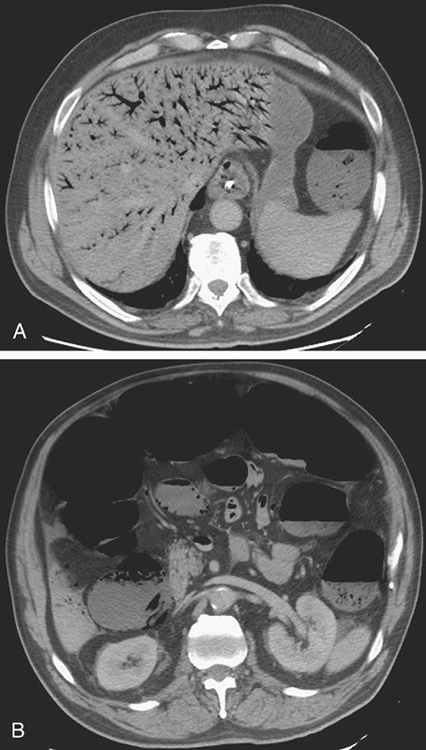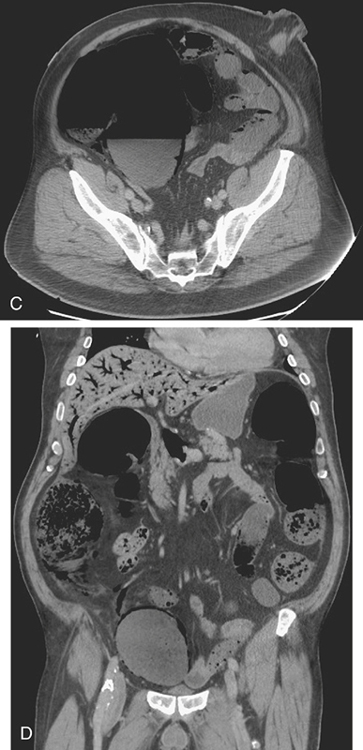CASE 32


History: A 69-year-old man presents with acute abdominal pain and tenderness, nausea, and vomiting.
1. Which of the following should be included in the differential diagnosis of the dominant imaging finding on figure A? (Choose all that apply.)
2. What other finding on figures B to D is linked to the finding in figure A?
3. Some benign conditions (not catastrophic bowel necrosis) are recognized as causes for gas in the portal venous system. Which of these is not an explanation for gas in the portal venous system?
4. How does one distinguish gas in the portal venous system of the liver from other abnormal gas collections?
A. Gas in the periphery of the liver
ANSWERS
CASE 32
Portal Venous Gas
1. A, B, and C
2. C
3. B
4. A
References
Gore RM, Yaghmai V, Thakrar KH, et al: Imaging in intestinal ischemic disorders. Radiol Clin North Am. 2008;46:845–875.
Cross-Reference
Gastrointestinal Imaging: THE REQUISITES, 3rd ed, p 209-210.
Comment
Gas in the portal venous system can be a serious finding, especially in the elderly (see figures). There are benign causes for this finding. Nevertheless, the identification of potential gas in the portal venous system always requires immediate communication with the clinical service to consider the catastrophic issue of bowel necrosis. A careful evaluation of the bowel for pneumatosis is also required. Occasionally gas can be seen in the mesenteric vessels, as in this case (see figures).
Gas in the biliary system is almost never a life-threatening event. The only exception might be gas in the biliary system due to gas-forming pyogenic infection. This is exceedingly rare and the patient would be extremely ill. Most gas in the biliary system is the result of surgery (choledochoenterostomies), erosion of gallstones through the wall of a chronically inflamed gallbladder into adjacent hollow viscus, or endoscopic retrograde cholangiopancreatography (ERCP) and papillotomy.







